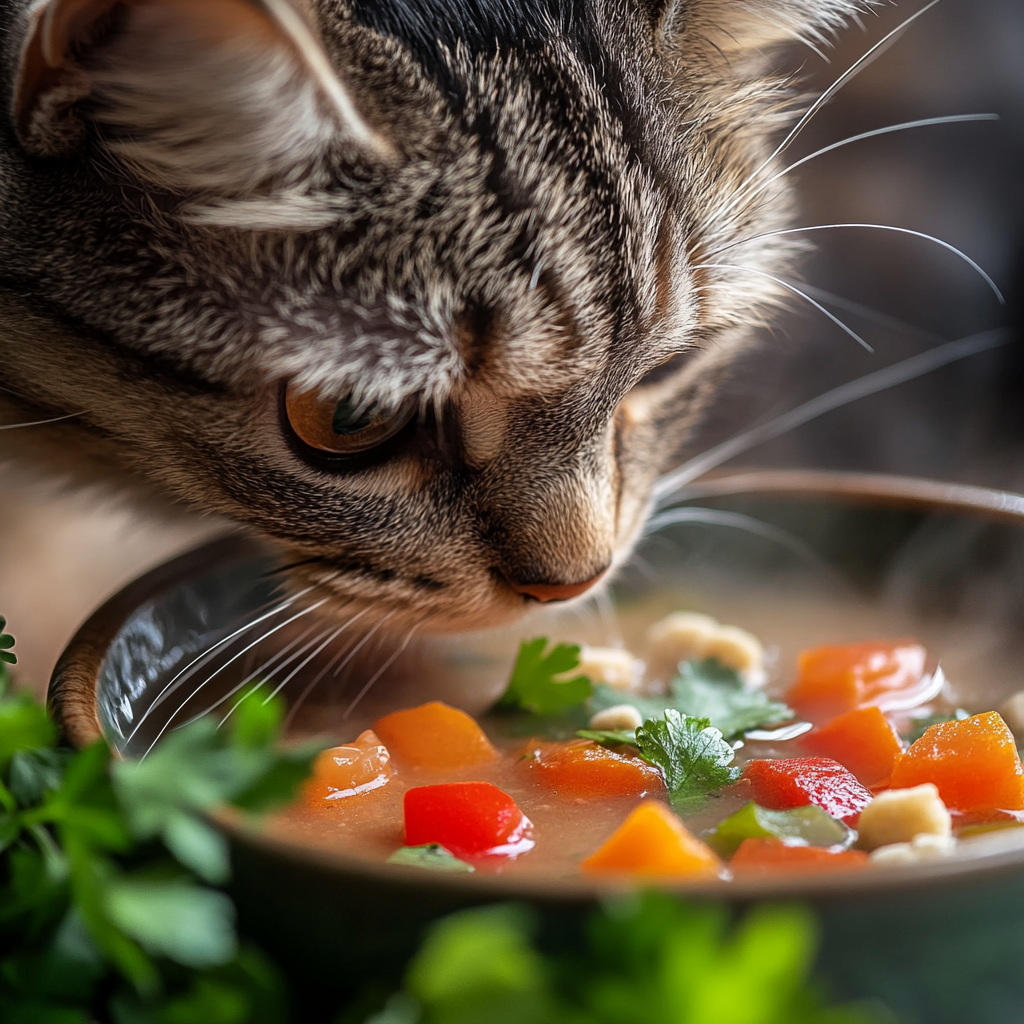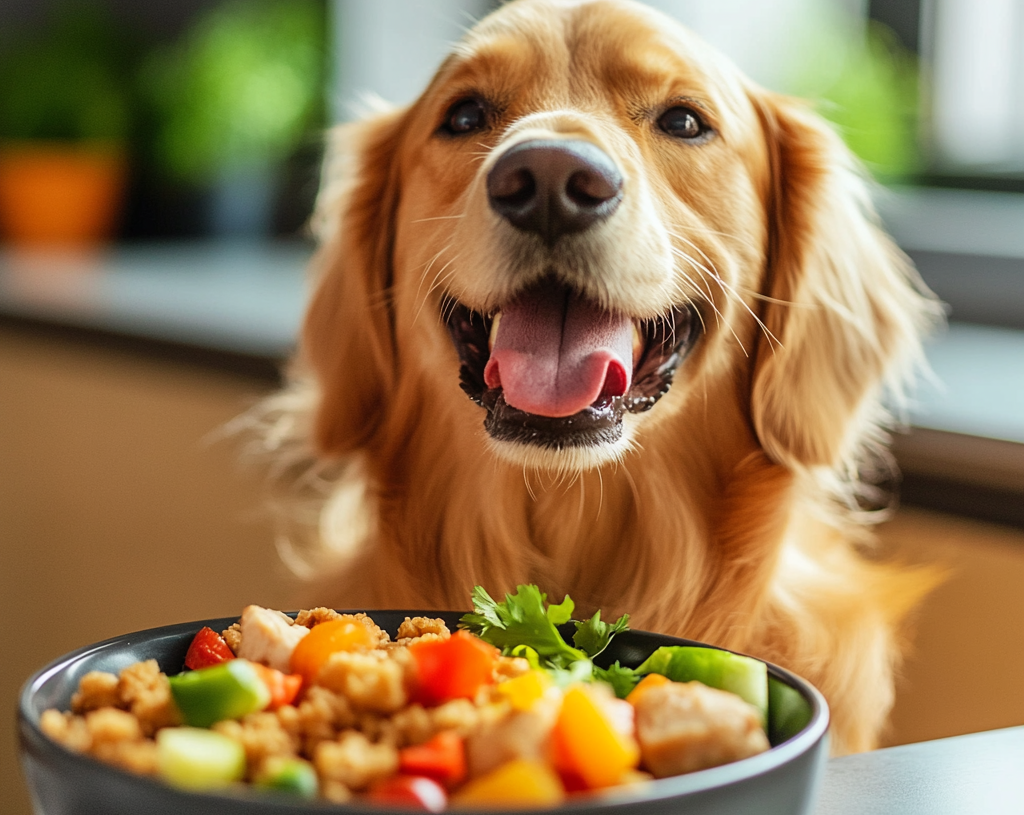Discover how to serve a meal topper with your pet’s food to enhance nutrition and improve mealtime. Learn easy tips to boost your pet’s diet with meal toppers and elevate their eating experience!
How to Serve a Meal Topper with Your Pet’s Food: A Simple Guide for Healthier Meals
Pets are part of the family, and just like us, they need meals that are both nourishing and appetizing. A great way to add variety and extra nutrients to your pet’s daily diet is by incorporating a meal topper into their regular food. Serving a meal topper with your pet’s food is an excellent way to enhance the flavor, texture, and overall nutritional value of their meals.

In this guide, we’ll explore everything you need to know about serving meal toppers with your pet’s food, from the benefits of using toppers to the best methods for adding them. If you’re ready to spice up your pet’s meals, read on for some practical tips!
Table of Contents
- What is a Meal Topper?
- Why Should You Serve a Meal Topper with Your Pet’s Food?
- Types of Meal Toppers for Pets
- How to Choose the Right Meal Topper
- How to Serve a Meal Topper with Your Pet’s Food
- Top Tips for Serving a Meal Topper
- Common Mistakes When Using Meal Toppers
- Conclusion
What is a Meal Topper?
A meal topper is any food or ingredient added on top of your pet’s regular food to provide extra flavor, texture, or nutrients. These toppers can range from simple additions like a spoonful of canned food to more complex mixes containing meat, vegetables, or probiotics.
Meal toppers are a great way to make your pet’s meals more interesting, especially if they are picky eaters. They can also serve as a way to enhance their diet with specific nutrients that may be missing from their standard kibble or wet food.
Why Should You Serve a Meal Topper with Your Pet’s Food?
There are several reasons why serving a meal topper with your pet’s food can benefit their health and well-being:
- Increased Nutritional Value
Some pet foods may lack certain nutrients, and a topper can fill in the gaps. Whether it’s extra protein, healthy fats, or beneficial fiber, toppers can provide a more balanced diet. - Improved Flavor
If your pet tends to be picky, adding a tasty meal topper can make their food more appealing. This can encourage them to eat their meals consistently. - Variety and Enjoyment
Pets can get bored of the same food every day. Toppers offer a quick way to vary their meals without switching up their entire diet. It’s like giving them a surprise treat each time they eat! - Weight and Digestive Health
Some meal toppers, especially those that include probiotics or fiber, help with digestion and weight management. They can support a healthy gut and promote regular bowel movements.
Types of Meal Toppers for Pets
When it comes to serving a meal topper with your pet’s food, there are many types to choose from. Let’s look at some of the most popular options:
1. Canned Food Toppers
Canned pet food is a classic topper option. Whether you use wet food from the same brand as their regular kibble or opt for a more luxurious choice, these toppers are rich in flavor and moisture.
2. Freeze-Dried Toppers
Freeze-dried meals retain much of their nutritional content while offering a long shelf life. They’re convenient and can easily be mixed into your pet’s dry food for added protein.
3. Broths and Gravies
Low-sodium broths or specially made gravies are perfect for adding moisture and flavor to dry kibble. Plus, many broths come with added vitamins or electrolytes, making them a healthy addition.
4. Fresh Ingredients
Fresh fruits, vegetables, or meats can serve as wonderful meal toppers. Whether you mix a small portion of cooked chicken, carrot slices, or a spoonful of plain pumpkin puree, your pet will enjoy the fresh flavors and additional nutrition.
5. Powdered Supplements
For a no-fuss approach, powdered meal toppers that focus on adding vitamins, minerals, or fatty acids can be sprinkled over your pet’s meal. These are particularly great for pets that need targeted health boosts.
How to Choose the Right Meal Topper
Not all meal toppers are created equal. To serve a meal topper with your pet’s food effectively, it’s important to select the right one based on their dietary needs and preferences.
- Understand Your Pet’s Dietary Requirements
Every pet is different. Some pets need more protein, while others might need additional fiber or probiotics. Look for meal toppers that complement your pet’s existing diet. - Consider Their Preferences
If your pet is particularly picky, opt for a meal topper with familiar flavors. If they love chicken, try chicken-based toppers. You can also experiment with different textures—some pets prefer chunks of meat, while others prefer smooth purees. - Check the Ingredient List
Always read the label to ensure that the meal topper doesn’t contain any harmful additives or preservatives. Opt for natural, whole food ingredients when possible. - Avoid Overfeeding
Toppers should be used as an enhancement, not a replacement for their regular food. Be mindful of portion sizes to avoid overfeeding or upsetting their nutritional balance.
How to Serve a Meal Topper with Your Pet’s Food
Now that you know why you should serve a meal topper with your pet’s food and what types to consider, here’s how to incorporate them into their meals:
1. Start Small
Begin with a small portion of the meal topper, especially if your pet is new to toppers. Gradually increase the amount as they get accustomed to it.
2. Mix Thoroughly
Gently mix the meal topper with your pet’s regular food to ensure an even distribution. This will help your pet get used to the flavor and texture.
3. Use Toppers to Increase Hydration
For pets that don’t drink enough water, using a topper like broth can increase fluid intake, which is especially important for overall health.
4. Serve as a Treat
You can also serve the meal topper separately as a treat in between regular meals. This is especially useful if you want to reward your pet or reinforce positive behavior.
Top Tips for Serving a Meal Topper
Here are some practical tips for serving a meal topper with your pet’s food:
- Consistency Is Key
Ensure that you serve meal toppers regularly for maximum benefits. Don’t just use them as a one-time treat. - Rotate Toppers for Variety
To keep mealtime interesting for your pet, rotate different types of toppers to prevent food fatigue. - Monitor Their Health
Watch for any changes in your pet’s digestion or weight. If you notice any issues, consult your vet to determine if adjustments are needed. - Don’t Overdo It
Meal toppers are meant to enhance your pet’s food, not replace it. Be mindful of the portion sizes to maintain a balanced diet.
Common Mistakes When Using Meal Toppers
While meal toppers are a fantastic addition to your pet’s food, there are a few common mistakes that pet owners should avoid:
- Not Monitoring Portion Sizes
Adding too much of a meal topper can lead to overfeeding and obesity. Always follow the recommended serving size. - Not Choosing the Right Topper
Make sure the topper matches your pet’s specific dietary needs. For example, a high-protein topper might not be suitable for pets with kidney issues. - Using Toppers as the Primary Food
Meal toppers should be an enhancement, not a replacement. They should not be used as the main meal.
Conclusion
Serving a meal topper with your pet’s food is a simple and effective way to boost their nutrition and make mealtime more enjoyable. Whether you choose canned food, fresh ingredients, or supplements, meal toppers can provide essential nutrients, enhance flavor, and even help with digestion. By following the tips above, you can ensure that your pet is enjoying meals that are both healthy and exciting!
For more pets related articles click here and for recipes lovers see here
